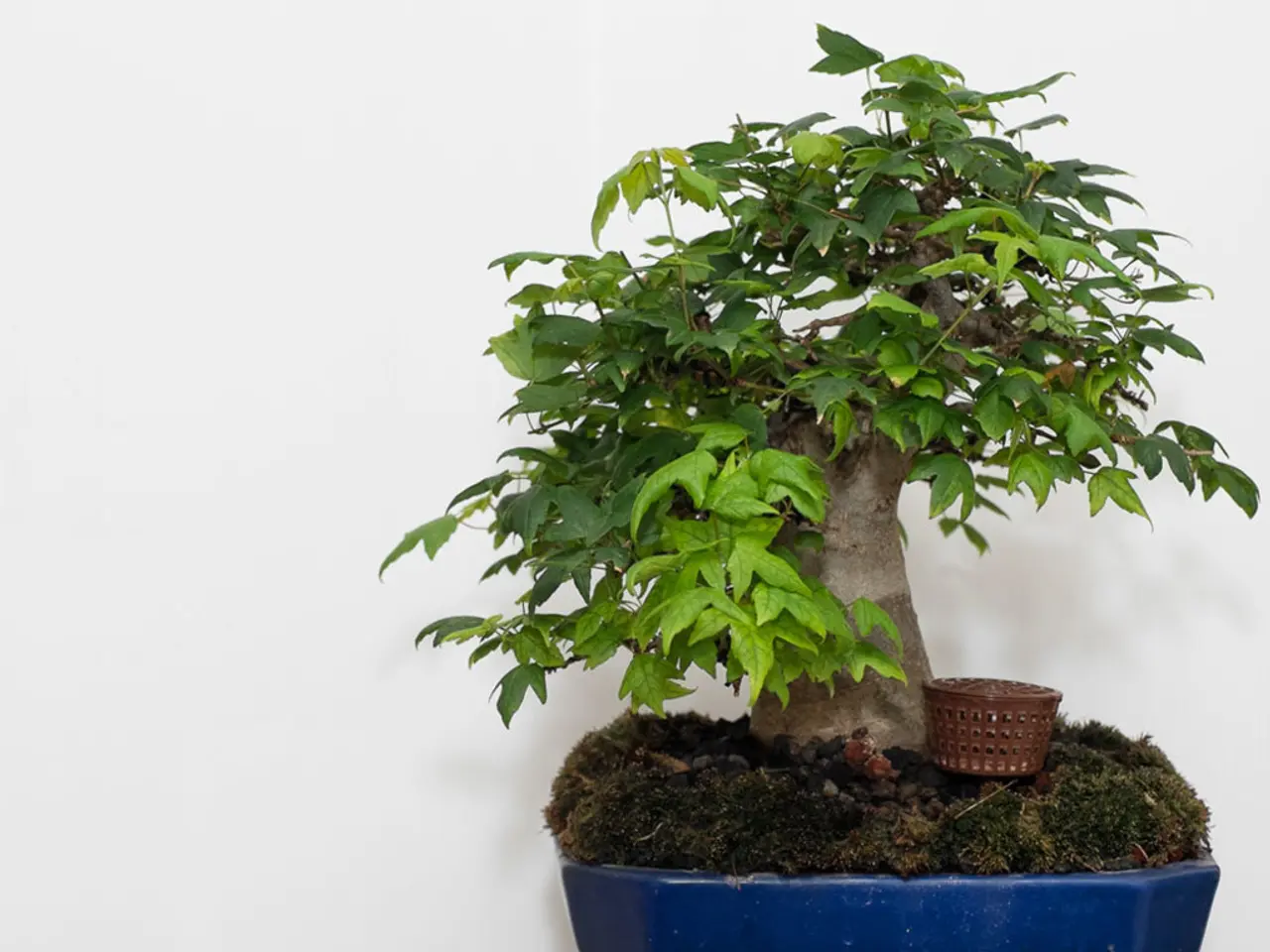Honing Bonsai Jin Naturally: Precise Methods for Induced Decay
Bonsai artists have discovered a unique technique to create the aged, deadwood features essential for jin - a process that involves deliberately promoting natural decay. This approach mimics the weathering and damage seen in old trees, providing a mesmerizing touch to the bonsai masterpieces.
Embracing the Process of Decay
The key to this technique lies in carefully removing bark from branches or trunks, allowing the sapwood to dry and decay naturally while managing factors that affect decay such as moisture, fungal activity, and insect exposure. The wood undergoes mechanical decay (expansion/contraction causing fissures), fungal attacks, and oxidation, gradually breaking down the wood’s lignin and texture to create an authentic deadwood appearance.
Bark Removal and Natural Decay Management
Stripping the bark from the desired branch or trunk section initiates the natural drying and decay process. This mimics the natural damage and weathering processes seen in old trees. Once the decay process begins, it's crucial to allow it to evolve organically, embracing the unpredictable nature of the process to create a truly unique bonsai.
Preservation and Shaping
While decay is desired for appearance, preservation is necessary to prevent excessive rot. Applying compounds like lime sulfur stabilizes deadwood by whitening and hardening it, protecting against fungal growth and insects. After or during decay, pruning and shaping leftover dead branches helps create natural forms that enhance the aged look.
Environmental Control
Positioning bonsai where the deadwood can dry slowly and be exposed to elements like sun and wind, but avoiding conditions fostering extreme rot or insect infestation, promotes gradual natural decay. Regular visual inspections facilitate nuanced observations of decay progression, empowering bonsai artists to pinpoint subtle changes in color, texture, and form that signal the emergence of striking jin features.
By adopting a holistic approach to bonsai care, we can foster an environment that promotes healthy growth, even as we invite decay to sculpt the tree's narrative. When working with decaying wood, it's essential to wear gloves, masks, and protective eyewear to shield oneself from fungal spores and bacterial threats.
Considerations for Decay Rate Assessment
Factors to consider for decay rate assessment include wood density and moisture content, fungal activity, environmental conditions, initial wood condition, time, and patience. Understanding the nuances of decay is crucial for coaxing forth the beauty of decay in bonsai.
To prevent pest infestations when working with decaying bonsai material, ensure good air circulation, monitor moisture levels, and apply targeted treatments to eliminate unwanted insects. The timeframe for achieving desired decay results in bonsai varies greatly, dependent on factors such as wood type, environmental conditions, and fungal activity, with some species requiring months, while others may take years to exhibit ideal natural decay.
Balancing Decay and Health
When incorporating newly collected bonsai material, natural decay can be employed, but it's vital to ponder the tree's health and stability first. A delicate balance must be struck between encouraging decay and preserving the health of the bonsai, as unchecked fungal activity can quickly compromise the tree's integrity. Balance decay with living foliage to create a sense of tension and contrast, adding depth to the composition.
By deliberately manipulating environmental conditions, bonsai artists can orchestrate the pace and trajectory of decay, nudging the process toward the creation of striking jin features. While some species innately resist decomposition, clever manipulation of environmental conditions and fungal activity can still facilitate natural decay, albeit at a slower pace.
Accurate decay rate assessment is vital for monitoring progression and making informed decisions about when to intervene or adjust environmental conditions. By mastering the art of natural decay in bonsai, artists can create truly unique and mesmerizing masterpieces that reflect time and natural wear on the tree.
Science and home-and-garden go hand in hand when bonsai artists manipulate environmental conditions to promote natural decay, mimicking the weathering and damage seen in old trees for aesthetic purposes. Embracing the process of decay involves carefully managing factors that affect decay, such as moisture, fungal activity, and insect exposure, to create an authentic deadwood appearance.
By considering wood density and moisture content, fungal activity, environmental conditions, initial wood condition, time, and patience, bonsai artists can create a mesmerizing touch to their lifestyle masterpieces through home-and-garden practices that rely on the interplay between decay, health-and-wellness, fitness-and-exercise, and science.






